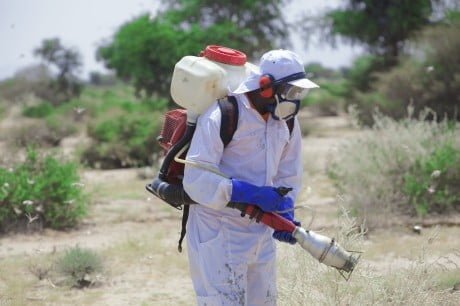A new collaboration between organizations in India and the United States aims to raise awareness and support expanded production and consumption of nutrient-rich millets. The Indo-US Millets Initiative brings together major players in the millets space, including non-profits Sorghum United and the North American Millets Alliance (NAMA), India’s national India Millet Initiative, and the University of Nebraska’s Daugherty Water for Food Global Institute.
These groups signed an expression of interest formalizing their plans to cooperate on education, research, policy advocacy, and market development for sorghum and millets. The partners aim to leverage momentum from the United Nations’ International Year of Millets, continuing high-level conversations about the value of these ancient cereal grains.
“Sorghum United is excited to bring this partnership with Dr. Satyen Yadav’s team at the India Millet Initiative to the United States,” said Sorghum United CEO Nate Blum. He specifically highlighted opportunities for knowledge exchange between institutions in India and Nebraska, where Sorghum United is headquartered.

The collaborative aims to raise consumer awareness about millets’ nutritional benefits, ability to grow under water-limited conditions, and suitability for sustainable food production in both India and North America. Efforts will include co-hosting educational events, advocating for supportive government policies, and building commercial markets for millet food products.
Background on Millets
Millets are small-seeded grasses grown primarily in dry zones of Asia and Africa. This diverse group includes sorghum, pearl millet, finger millet, proso millet, foxtail millet, little millet, kodo millet, and barnyard millet. These grains have served as traditional staple crops in many societies due to their resilience to hot, dry conditions unsuitable for most other cereal crops.
In recent decades millets have lost ground to more heavily researched commodities like wheat, rice, and maize. But rising awareness of climate change and malnutrition has renewed interest in these nutritious, sustainable options. Hence the UN’s decision to dedicate 2023 as the International Year of Millets, intended to “increase global production, consumption and trade” of these hardy grains.
Partners in the Indo-US Millets Initiative
The four core partners represent significant experience in various realms of millets research, policy, and promotion:
Sorghum United
- Non-profit organization connecting global sorghum and millets value chain stakeholders
- Expertise in consumer/producer education and value-added market development
- Based in Lincoln, Nebraska
India Millet Initiative
- National consortium convening millets farmers, processors, traders, and other parties
- Aims to significantly expand millet cultivation and consumption in India
- Based in Noida area of Delhi
North American Millets Alliance
- Non-profit educating North American audiences about millets’ benefits
- Focused on awareness-building through collaborations
- Coalition of stakeholders mostly across western U.S. states
Daugherty Water for Food Global Institute
- Academic institute at the University of Nebraska committed to food security
- Specializes in sustainable water management for agriculture
- Positioned to research millets’ high water productivity
These organizations have pledged joint efforts to boost millets’ profile and real-world impacts in both India and the U.S. Planned initiatives include exchanges of students, research findings, and commercial trade delegations. The groups also aim to co-develop educational programming around millets production and processing.

On the policy front, the Indo-US Millets Initiative plans to coordinate advocacy campaigns encouraging both governments to support millets farming through incentives and research funding. Another priority is helping small and medium enterprises in each country launch new consumer products made from nutrient-dense millet grains.
Through these means, the collaborative aims to leverage millets as climate-smart crops that can strengthen food and water security for vulnerable communities across India and North America. With the world searching for resilience in the face of climate change and health challenges, this international effort comes at an opportune time to share millets’ benefits more widely.




